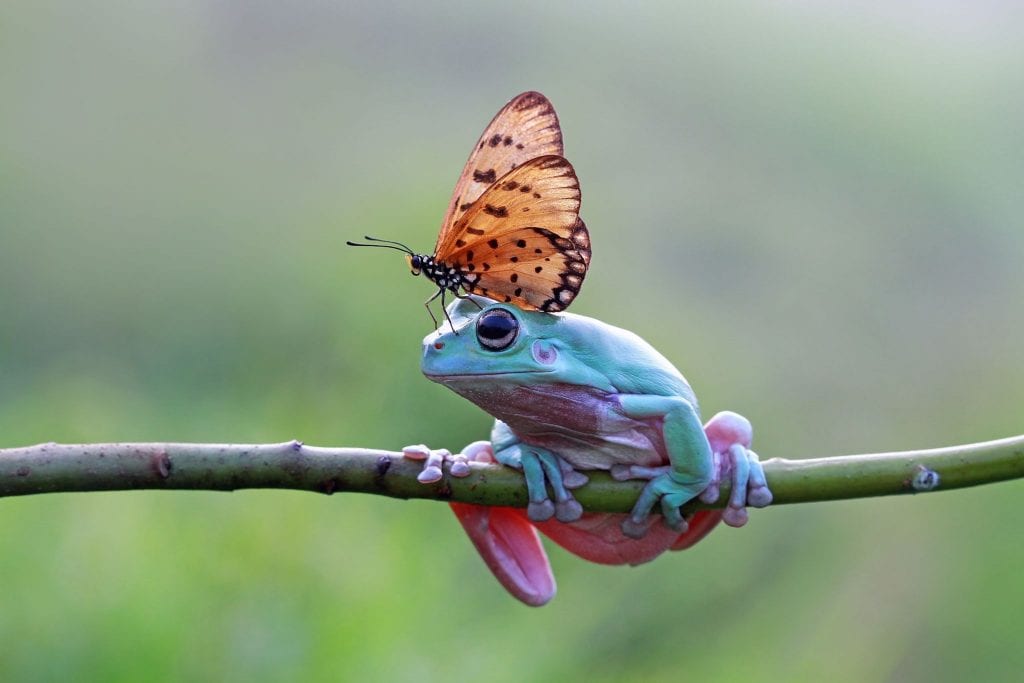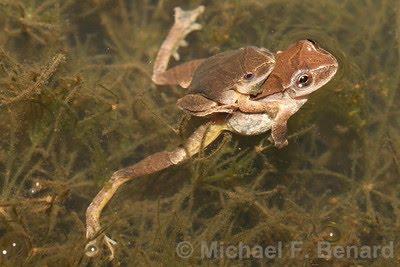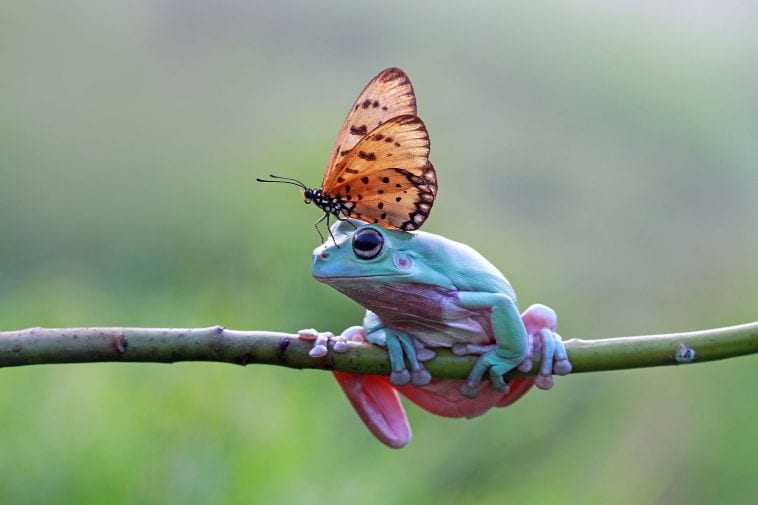As the sun starts to set to signal the fall of the night, you might hear a tune that has always been an accompaniment to such magnificent scenery. A chirp, cluck, croak, or ribbit? Most would say frogs can be annoying to the ear, but they sound not just to make some noise in your lawn or backyard or may be disgusted by the mere sight of them.
Frogs are not as harmful as most think and can only cause harm when threatened, and a little croaking should not hurt your eardrums too much, right? Learn more about these leaping lads and lassies and be fascinated by the science and art of their life and music.

How Do They Do It?
Frogs are able to create their croaks with the help of vocal cords and work similarly to how human beings have vocal cords that make us capable of speaking. In fact, they have a special part called a “vocal sac” that makes that distinct “ribbit” possible and the first animals on land to develop vocal cords.
Once their lungs fill up the vocal sac like a balloon that bloats with air, the larynx then vibrates in their throat as the air travels through it, hence making a “croak.” Try visualizing how you inflate a balloon then slowly release the air while you are still pinching it at the mouth. You will notice the lip wiggles or shakes as the air escapes, creating a sort of wheezing noise. Frog’s vocal sacs work in a similar way.
It’s a Man’s World Out There
The croaks are not done by everyone in the foggy territory. In fact, only males croak, and they do it to call for their own princess of their dreams – (who knows it could be you!) females to court or mate, sort of like their version of online dating but minus the phones and just the use of sound. Females, though from the Asian frog family (Polypedates), can also croak similar to the males and do it when the time has come to breed.
Each species of frog also has its own kind of croak or sound that makes it easier to recognize and for the ladies to identify them even in a chorus of several other frog species (a perfect match made!). Biologists have also proved that some species even have their own accent to their croaks that help distinguish them from other frogs that might be hard to tell apart from, especially based on their physical appearance.

Make Some Noise!
Besides their common croak, frogs can also make other noises such as a chirp, snore, whistle, peep, bark, cackle, trill, grunt, bell, and tap. This varies among species. Other species like the Ascaphus (also known as tail frogs) do not croak at all because they lack the medium to create sound. You can listen to the many kinds of frog tunes below:
And as a bonus, this is the war-cry of the Desert Rain Frog, one of the smallest species of frog:
Tell Me When and Where
You know by now that frogs can be frequently heard during the night or when there is rain. Frogs are nocturnal creatures and, therefore, will call onto their potential lovers or soulmates in the dark. Rain offers them extra “breeding ground” to lay eggs, and so they maximize it by sending a message to the females too.
Their mating calls also seem to signal that it is about to rain as if they can sense it and can find a match in time as the rain starts to pour. Croaking that can be heard during the day can also be a good way for frogs to locate each other and be aware of which zone they belong to. It also works as a signal when it feels threatened or as a defense.
Hearing Each Other Out
Yes, frogs do have ears, but they are not visible, unlike mammalian ears. Frogs listen through their inner ear, which is protected by their eardrum found on the side of the head. This covering is known as a tympanum. Their hearing works like how the human ear can hear, but what makes these amphibians unique is that even low frequencies are audible to them. This is because their eardrum and inner ear are too close to each other.
Hence, they cannot hear the noise of high frequencies since the distance of their inner ear and eardrum must be farther. This feature, though, has made it possible for them to hear underwater. You can also tell a male and female apart by checking their ears, which looks like a brown circle beside the eye. A female has a smaller spot while males have a bigger spot; this is the tympanum from the outside.
Keeping it On Key
Our croakers do not always have an exact same croon for their every chorus. They actually depend on their surroundings to find the right key for the croak to be heard out by their fellow frog friends. One important factor in hitting the right note is the presence of water. Water usually absorbs sound, so frogs will usually try to increase the frequency of their croaks so that they can be heard even from a far off distance, which can go as far as a mile.
For frogs that have flowing water in their environment that may mute their vocals, they have developed another way to communicate. Hence, some can croak underwater while others have “ultrasound croaks” that are heard under low frequencies. These low-frequency croaks are inaudible to the human ear.
Here are more fun frog facts:
- While their long and flexible tongue captures their food, a frog’s eyes help it swallow food. While eating, they blink their eyes to push down the food to their throat.
- Female frogs can lay up to at least four hundred up to almost four thousand eggs in one breeding.
- A frog’s skin is full of nutrients. Frogs consume their skin after shedding it, serving as a nutritious meal beside the insects they catch. On average, they molt every week, but some frogs can molt every day. It’s skincare on a whole new level.
- The collective noun for a group of frogs is an “army.”
- Frogs can only see in black and white, but their excellent night vision is helpful for catching bugs in the dark.
- Frogs stay hydrated by being in the water often. Their skin absorbs water and keeps them moisturized instead of drinking it from their mouth. Their skin helps them breathe underwater as well.
- A frog can leap up to more than twenty times the length of their body. A small step for man is a whole leap for the amphibian army!
- Since frogs do not have the ability to turn their heads, their eyes have a three hundred sixty degree view in order to see their surroundings. The eyes also have a protective covering like fish, which is why they are able to see even when submerged in water.
- The female frogs are usually larger than males. The females also have a white throat, while males have a yellowish tone on their throat.
- You can find frogs in all of the continents except for Antarctica. At present, there are more than four thousand seven hundred species.
- The largest frog in the world is known as the Goliath frog from Cameroon, West Africa. These frogs can grow up to a foot long and weigh as much as seven pounds (that’s as heavy as a newborn child).
- In ancient Egypt, Heket is the goddess of fertility and is symbolized in the form of a frog.
Conclusion
Many may fear or feel grossed out over the idea of frogs, but they are like any other animal that plays a vital role in our ecosystem, especially with bug problems. Their cries are heard in the middle of the night can be a nuisance too, but getting to know these slimy, leaping, croaking pals helps gives us a clear understanding of why they behave in such manner instead of settling what we see from the surface. So the next time you see or hear a frog by the pond or the lawn, let it croak on and leap free.



